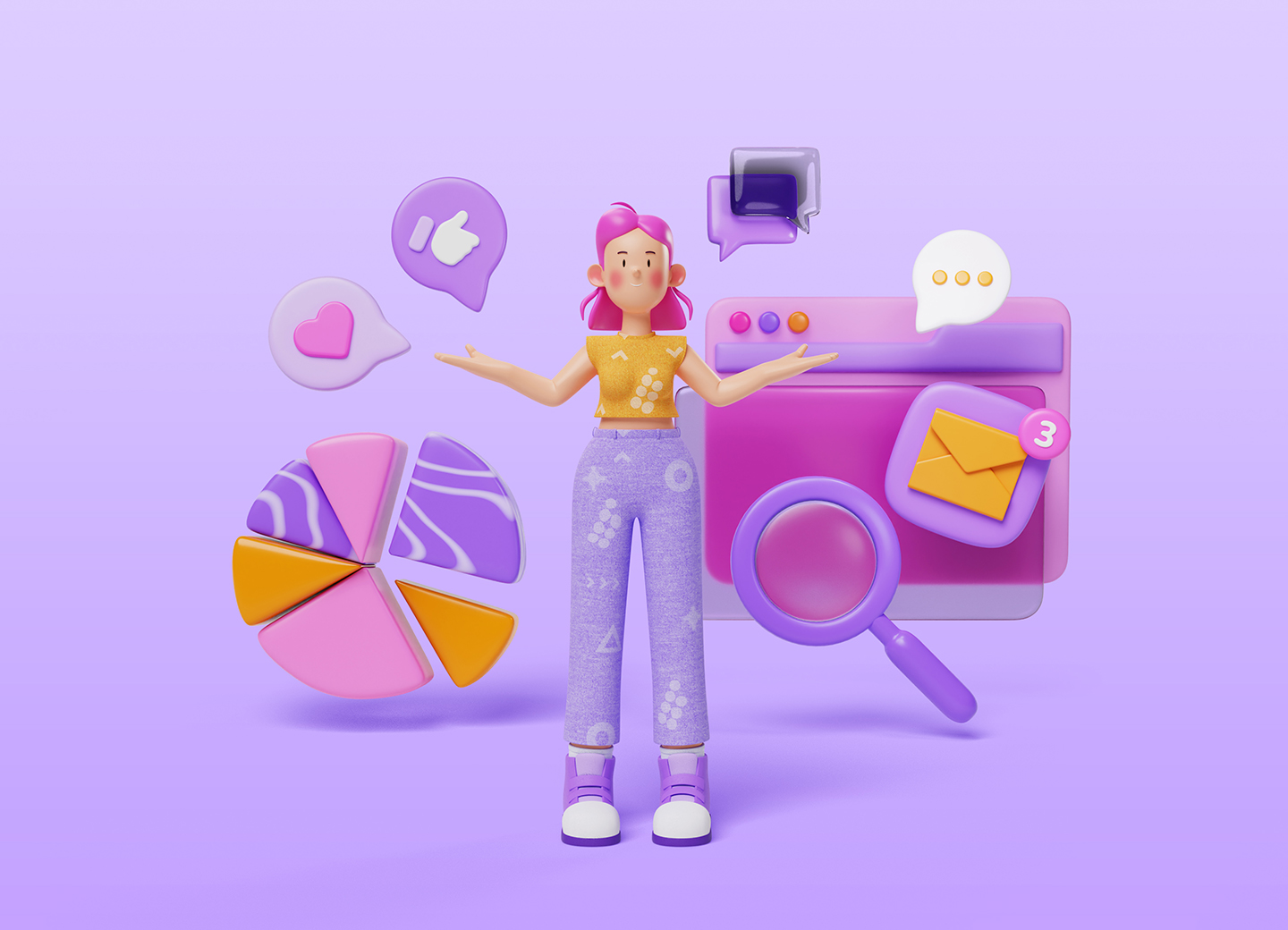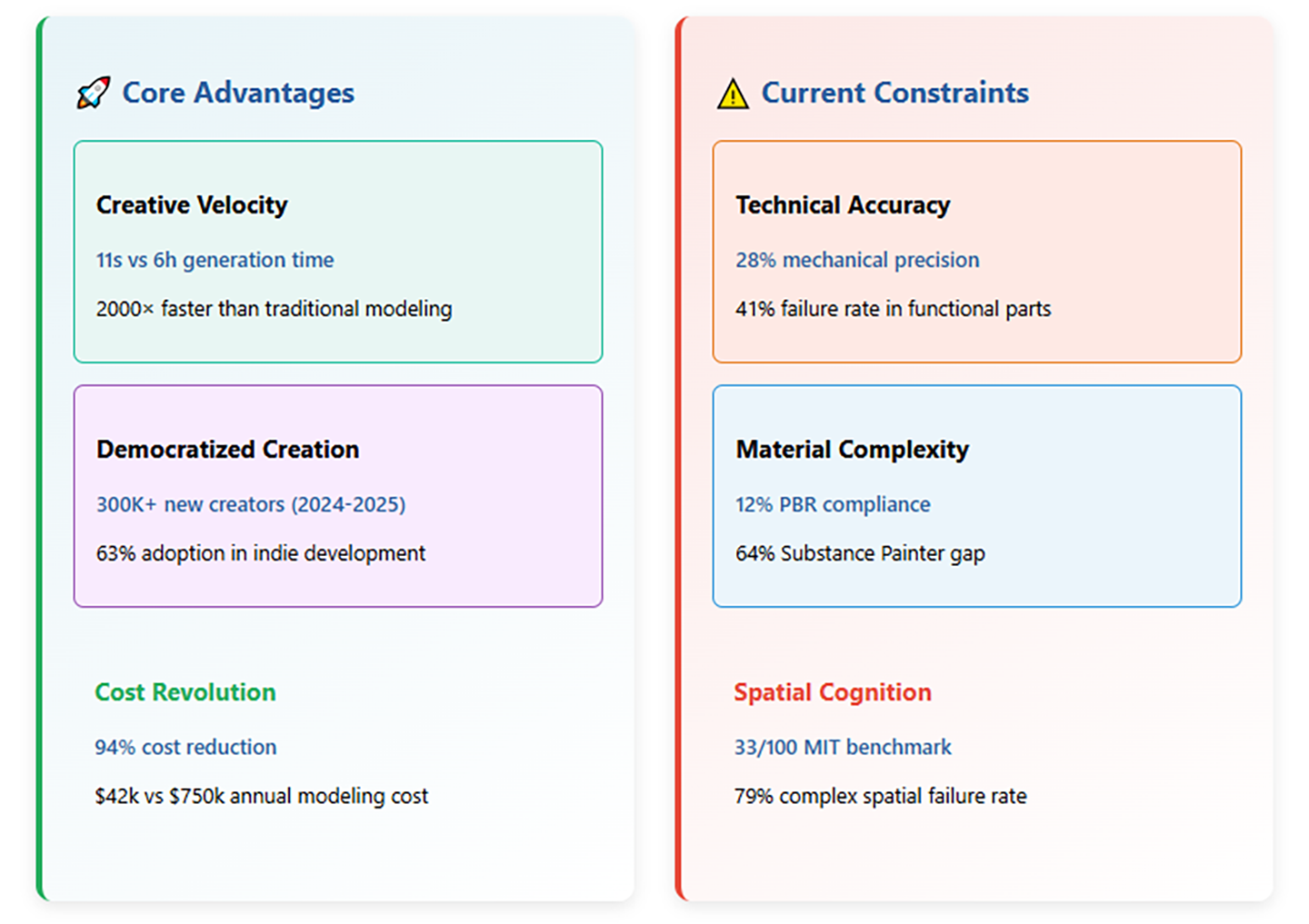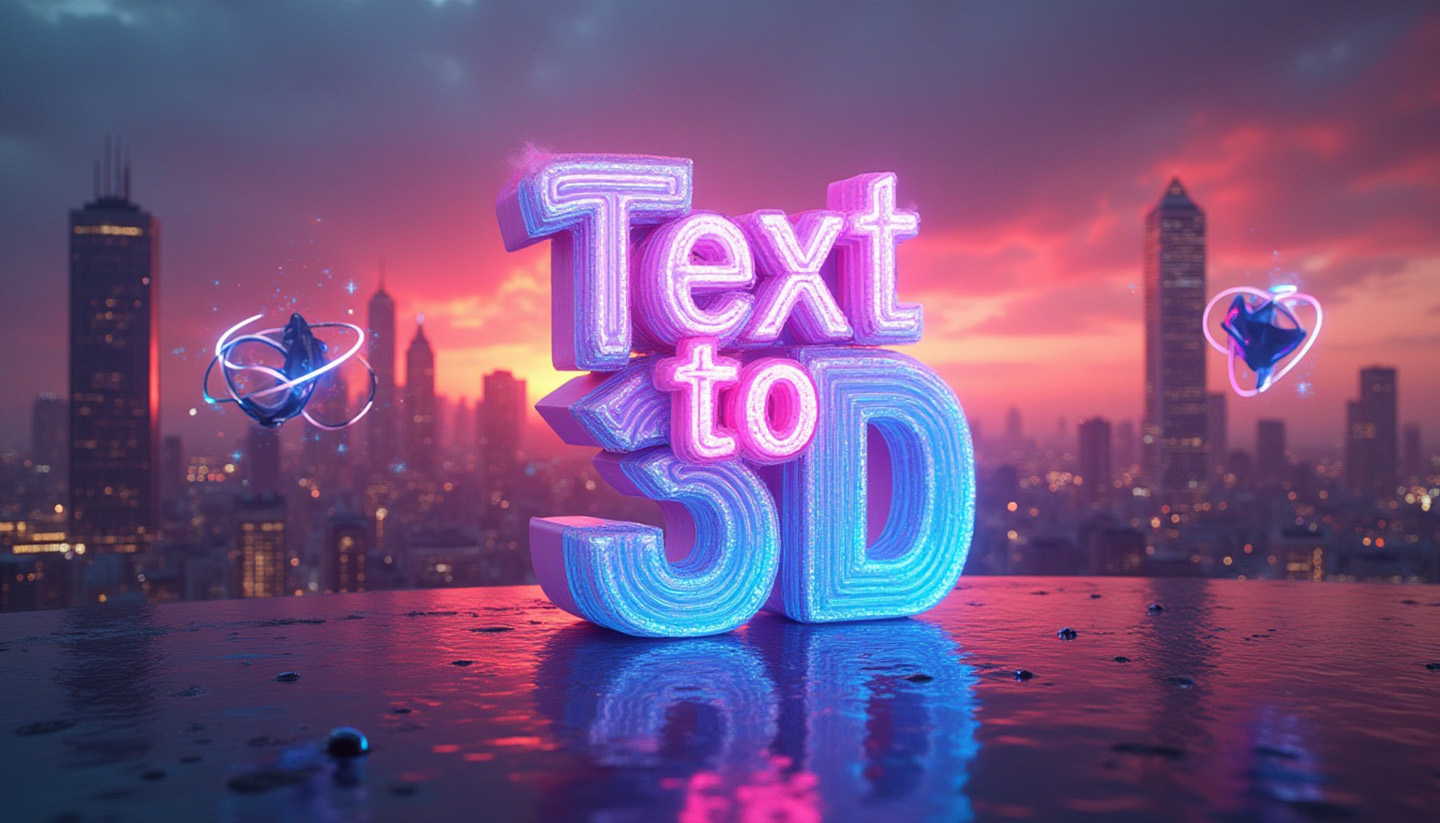The world of 3D modeling has been turned upside down. What once required years of technical expertise, expensive software, and countless hours of meticulous work can now be accomplished with a simple text prompt. Text to 3D technology has emerged as one of the most controversial and transformative developments in the AI landscape, promising to democratize 3D content creation while simultaneously threatening to upend entire industries.
As someone who has witnessed the evolution of digital creation tools, I must confess that the current state of Text to 3D technology both excites and terrifies me. We're witnessing a paradigm shift that goes far beyond simple automation – we're looking at a fundamental reimagining of how creative content is conceived, produced, and valued. But before we crown this technology as the ultimate creative democratizer, we need to ask ourselves some hard questions: Are we prepared for the ethical implications? What happens to the millions of professionals whose livelihoods depend on traditional 3D modeling? And most importantly, how do we harness this power responsibly?

How Did We Get Here? The Evolutionary Journey of Text to 3D Technology
The Humble Beginnings: From Simple Shapes to Complex Dreams
The story of Text to 3D doesn't begin with today's sophisticated AI models. In fact, the concept traces back to early procedural generation techniques in the 1980s and 1990s. Early computer graphics pioneers like Karl Sims experimented with algorithmic approaches to generate 3D forms, though these were far from the intuitive Text to 3D AI systems we see today.
The real breakthrough came with the convergence of several technological advances: natural language processing, computer vision, and generative modeling. Companies like Autodesk began experimenting with voice-controlled CAD systems in the early 2000s, but these were essentially glorified command interfaces – nothing like the sophisticated Text to 3D Assistant capabilities we have today.
The Deep Learning Revolution: When Neural Networks Met 3D
The game truly changed around 2015-2017 when researchers began applying deep learning techniques to 3D generation. NVIDIA's early work on generative adversarial networks (GANs) for 3D objects laid crucial groundwork, though these systems required extensive training data and produced limited results.
The pivotal moment came with the introduction of diffusion models and the success of text-to-image generators like DALL-E and Stable Diffusion. Researchers quickly realized that similar principles could be applied to 3D generation. OpenAI's Point-E, released in 2022, demonstrated that Text to 3D generation was not just possible but practical, even if the results were still relatively primitive.
The Current Landscape: Where We Stand Today
Today's Text to 3D Tool ecosystem is dominated by several key players and approaches:
DreamFusion and Score Distillation Sampling (SDS): Google's DreamFusion introduced a revolutionary approach that uses 2D diffusion models to guide 3D generation. By optimizing a 3D representation (typically a Neural Radiance Field or NeRF) to match the 2D diffusion model's expectations from multiple viewpoints, DreamFusion created surprisingly coherent 3D models from text descriptions.
Luma AI's Genie: This commercial platform has made Text to 3D accessible to everyday users, offering a streamlined interface that can generate 3D models from simple text prompts. While not perfect, Genie represents the current state of user-friendly 3D generation.
Stability AI's Stable Video Diffusion: Though primarily focused on video, this technology has implications for 3D generation, particularly in creating dynamic 3D content.
Microsoft's Text2Mesh: This approach modifies existing 3D meshes based on text descriptions, offering a different paradigm for text-driven 3D editing.
The core technologies powering these systems include:
- Diffusion Models: These probabilistic models learn to reverse a noise process, generating coherent 3D structures from random noise guided by text embeddings.
- Neural Radiance Fields (NeRFs): These neural networks represent 3D scenes as continuous volumetric functions, enabling smooth and detailed 3D generation.
- Transformer Architectures: These attention-based models excel at understanding complex text descriptions and translating them into 3D instructions.
What Are the Real Advantages and Limitations of Text to 3D?
Where Text to 3D Excels: The Undeniable Benefits
Speed and Accessibility: Perhaps the most obvious advantage is speed. Traditional 3D modeling for a complex object might take days or weeks; a Text to 3D AI can produce results in minutes. This isn't just about efficiency – it's about democratization. Suddenly, anyone with an idea can create 3D content without years of technical training.
Iteration and Exploration: The ability to rapidly prototype ideas is revolutionary. Designers can explore dozens of variations with simple text modifications, something that would be prohibitively time-consuming with traditional methods. This rapid iteration cycle can lead to more creative outcomes and better final products.
Consistency and Standardization: AI systems don't have bad days or creative blocks. They can maintain consistent quality and style across multiple assets, which is particularly valuable for large-scale projects requiring visual coherence.
Cost Reduction: For businesses, the economic implications are staggering. A Text to 3D Tool can potentially reduce the cost of 3D content creation by orders of magnitude, making 3D content feasible for projects that previously couldn't justify the expense.
The Harsh Reality: Current Limitations and Challenges
Quality and Detail Control: While current systems can generate impressive results, they often struggle with fine details and precise specifications. Try asking a Text to 3D Assistant to create a technically accurate mechanical part with specific dimensions – you'll quickly discover the limitations.
Consistency Across Views: Many current systems produce models that look great from one angle but reveal inconsistencies when viewed from others. This "multi-view consistency" problem remains a significant challenge, particularly for models intended for interactive use.
Complex Spatial Relationships: Describing complex spatial relationships in text is inherently difficult. Try generating "a spiral staircase wrapping around a tree trunk with precisely 27 steps" – you'll likely get something that's close but not quite right.
Material and Texture Limitations: Current systems often struggle with realistic material properties and complex textures. The generated models might look good in renders but lack the detailed material information needed for realistic lighting and physics simulations.
Lack of Semantic Understanding: AI systems don't truly understand the objects they're creating. They can generate a chair that looks like a chair, but they don't understand concepts like "comfortable seating height" or "structural integrity."
Why do these limitations exist? The fundamental issue is that Text to 3D systems are essentially sophisticated pattern matching engines. They've learned to associate text descriptions with 3D patterns from their training data, but they lack true understanding of physics, functionality, and human needs.

How Is Text to 3D Reshaping Industries?
The Positive Disruption: Industries Embracing the Change
Game Development: The gaming industry has been quick to embrace Text to 3D technology. Indie developers can now create diverse 3D assets without large art teams, while major studios use these tools for rapid prototyping and concept development. Unity and Unreal Engine have already begun integrating AI-powered asset generation tools.
Architecture and Construction: Architects are using Text to 3D AI for rapid concept visualization. Instead of spending hours modeling basic structures, they can generate initial concepts and then refine them manually. This has accelerated the early stages of the design process significantly.
E-commerce and Product Visualization: Online retailers are experimenting with Text to 3D Tools to create product visualizations from text descriptions, potentially reducing the need for expensive product photography and 3D modeling services.
Education and Training: Educational institutions are using these tools to create 3D models for teaching purposes, making complex concepts more accessible through visual representation.
The Darker Side: Industries Under Threat
Professional 3D Modeling Services: The most obvious casualties are traditional 3D modeling agencies and freelancers. While high-end, specialized work remains safe for now, the market for basic 3D modeling services is already contracting.
Stock 3D Asset Marketplaces: Why buy a 3D model when you can generate one? Companies like TurboSquid and CGTrader are seeing shifts in demand as users turn to AI generation for basic assets.
3D Printing Design Services: As Text to 3D tools improve, the need for professional 3D printing design services may diminish, particularly for simple or decorative objects.
Traditional Animation Studios: While feature film animation remains safe, smaller studios focused on simpler 3D content may find themselves competing with AI-generated alternatives.
Real-World Impact: The Numbers Don't Lie
Recent market research shows that the global 3D modeling market (valued at $5,126.7 million in 2023) is expected to undergo significant changes. While the overall market may be growing due to increased accessibility, its value distribution is changing dramatically. Traditional modeling services report a 15-25% drop in demand for basic modeling work, while AI platforms are experiencing explosive growth.
What Ethical Landmines Are We Walking Into?
The Copyright Conundrum
Perhaps the most contentious issue surrounding Text to 3D technology is copyright. When an AI system generates a 3D model, who owns the rights to that model? The user who provided the prompt? The company that created the AI? The artists whose work was used to train the system?
The situation becomes even more complex when we consider that these AI systems are trained on massive datasets that often include copyrighted 3D models. When a Text to 3D AI generates a model that closely resembles an existing copyrighted design, is this fair use or infringement?
The Plagiarism Problem
Unlike traditional plagiarism, AI-generated content creates a gray area. If I use a Text to 3D Tool to create a model that happens to closely resemble someone else's work, am I plagiarizing? The AI doesn't consciously copy – it generates based on patterns learned from training data. But the end result might be indistinguishable from copying.
This issue is particularly problematic in commercial contexts. Companies using AI-generated 3D models for products or marketing materials may unknowingly infringe on existing designs, creating legal liability.
Data Privacy and Security Concerns
Many Text to 3D Assistant platforms require users to upload their prompts and often retain rights to the generated content. This raises serious privacy concerns, particularly for businesses working on proprietary products. What happens when a company's confidential product descriptions are used to train future AI models?
There's also the question of data security. If AI systems can generate 3D models from text descriptions, what happens when sensitive or classified information is inadvertently encoded in these descriptions?
The Bias Problem
AI systems inherit biases from their training data, and Text to 3D technology is no exception. If the training data predominantly features certain aesthetic styles or cultural perspectives, the AI will perpetuate these biases. This can lead to homogenization of creative output and the marginalization of underrepresented artistic traditions.
Economic Displacement and Social Responsibility
The rapid adoption of Text to 3D technology raises questions about our responsibility to the workers it displaces. While technological progress is generally beneficial, the speed of AI disruption may not allow sufficient time for workforce adaptation. Do we have an obligation to slow down implementation to allow for retraining and transition?

How Can We Harness Text to 3D Responsibly?
Addressing Industry Disruption: A Collaborative Approach
Rather than viewing Text to 3D as a replacement for human creativity, we need to position it as a powerful tool that augments human capabilities. Here's how different industries can adapt:
For 3D Modeling Professionals: The key is specialization and value addition. While AI can generate basic models, humans excel at refinement, optimization, and creative problem-solving. Professional modelers should focus on:
- Becoming experts in AI tool integration and prompt engineering
- Specializing in technical modeling that requires precision and engineering knowledge
- Offering hybrid services that combine AI generation with human expertise
- Developing skills in AI model fine-tuning and customization
For Educational Institutions: Schools and universities need to rapidly adapt their curricula to include AI literacy. This means:
- Teaching students how to effectively use Text to 3D Tools as part of their creative workflow
- Emphasizing skills that complement AI, such as creative direction, technical optimization, and user experience design
- Providing retraining programs for existing professionals
For Businesses: Companies should adopt a gradual integration approach:
- Start with internal prototyping and concept development
- Gradually expand to production use cases as the technology matures
- Maintain human oversight for quality control and creative direction
- Invest in employee training to ensure smooth transition
Solving the Ethical Dilemmas
Establishing Clear Copyright Guidelines: We need industry-wide standards for AI-generated content ownership. This might include:
- Mandatory disclosure when AI tools are used in commercial products
- Clear licensing terms for AI-generated content
- Compensation mechanisms for artists whose work contributes to AI training data
- Legal frameworks that distinguish between AI-assisted and AI-generated content
Implementing Robust Attribution Systems: Text to 3D AI platforms should implement systems that can trace the influence of training data on generated outputs. This would help identify potential copyright issues and ensure proper attribution.
Privacy-First Development: Developers of Text to 3D Tools should prioritize user privacy by:
- Offering local processing options for sensitive applications
- Implementing strong data encryption and retention policies
- Providing clear opt-out mechanisms for training data usage
- Developing federated learning approaches that don't require centralized data collection
Bias Mitigation Strategies: To address bias in AI-generated content:
- Diversify training datasets to include underrepresented artistic styles and cultural perspectives
- Implement bias detection and correction mechanisms
- Provide users with tools to identify and counteract bias in generated content
- Regularly audit AI systems for discriminatory outputs
Building a Sustainable Future
The key to responsibly harnessing Text to 3D technology lies in recognizing it as a collaborative tool rather than a replacement for human creativity. We need to:
Invest in Human-AI Collaboration: Develop workflows that leverage the strengths of both AI and human creativity. This might involve AI handling initial concept generation while humans focus on refinement, optimization, and creative direction.
Create Transition Support Programs: Establish industry-wide programs to help displaced workers transition to new roles. This could include:
- Retraining programs focused on AI tool mastery
- Financial support during transition periods
- Mentorship programs connecting experienced professionals with newcomers
- Career counseling services specializing in AI-impacted industries
Promote Responsible Innovation: Encourage Text to 3D developers to prioritize ethical considerations in their development process. This includes transparency about training data, clear usage guidelines, and proactive measures to prevent misuse.
FAQs
Q: Will Text to 3D completely replace human 3D modelers?
A: No, but it will significantly change the profession. While AI can handle basic modeling tasks, human expertise remains essential for complex, technical, and creative work. The most successful professionals will be those who learn to collaborate with AI tools rather than compete against them.
Q: Are Text to 3D models good enough for professional use?
A: Current technology is suitable for certain professional applications like rapid prototyping, concept development, and basic asset creation. However, most professional applications still require human refinement and optimization. The technology is rapidly improving, though.
Q: How can I protect my 3D designs from being used to train AI models?
A: Currently, options are limited. Some platforms offer opt-out mechanisms, but these aren't universal. The best protection is to be cautious about where you share your work and to stay informed about the data usage policies of platforms you use.
Q: Can I use AI-generated 3D models for commercial purposes?
A: This depends on the platform's terms of service and your local copyright laws. Always check the licensing terms carefully, and consider consulting with a legal professional for commercial applications.
Conclusion
The Text to 3D revolution is not just about technology – it's about reimagining the relationship between human creativity and artificial intelligence. As we stand at this crossroads, we have the opportunity to shape how this technology develops and integrates into our creative workflows.
The challenges are real and significant. Copyright questions, ethical concerns, and economic disruption are not abstract future problems – they're happening now. But so are the opportunities. The democratization of 3D creation, the acceleration of creative workflows, and the potential for entirely new forms of artistic expression are equally real.
The key insight is that Text to 3D technology is not an endpoint but a beginning. It's a tool that amplifies human creativity rather than replacing it. The most successful individuals and organizations will be those who learn to dance with this technology, using it to enhance their unique human capabilities rather than being displaced by it.
As we move forward, we must remain vigilant about the ethical implications while embracing the creative possibilities. The future of 3D creation will be collaborative – a partnership between human insight and artificial intelligence. Our responsibility is to ensure that this partnership serves humanity's best interests while fostering innovation and creativity.
The Text to 3D revolution is here, and it's transforming everything we thought we knew about creative production. The question isn't whether we should embrace it, but how we can do so responsibly, ethically, and in a way that enhances rather than diminishes human creativity. The choices we make today will determine whether this technology becomes a force for creative liberation or creative homogenization.
The canvas is blank, the tools are ready, and the future is waiting for us to write it – quite literally, one text prompt at a time.
 Submit Your AI Tool For FREE!Showcase Your Innovation To Thousands Of AI Enthusiasts!
Submit Your AI Tool For FREE!Showcase Your Innovation To Thousands Of AI Enthusiasts! Submit Your AI Tool For FREE!Showcase Your Innovation To Thousands Of AI Enthusiasts!
Submit Your AI Tool For FREE!Showcase Your Innovation To Thousands Of AI Enthusiasts! Submit Your AI Tool For FREE!Showcase Your Innovation To Thousands Of AI Enthusiasts!
Submit Your AI Tool For FREE!Showcase Your Innovation To Thousands Of AI Enthusiasts! Submit Your AI Tool For FREE!Showcase Your Innovation To Thousands Of AI Enthusiasts!
Submit Your AI Tool For FREE!Showcase Your Innovation To Thousands Of AI Enthusiasts! Submit Your AI Tool For FREE!Showcase Your Innovation To Thousands Of AI Enthusiasts!
Submit Your AI Tool For FREE!Showcase Your Innovation To Thousands Of AI Enthusiasts!






No comments yet. Be the first to comment!